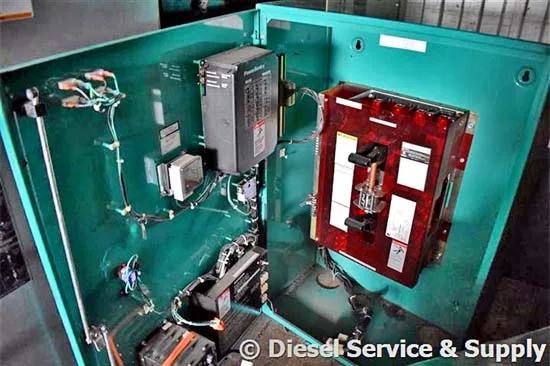Generators and Their Applications
Generators have a wide range of options, come in different shapes and sizes, and are used for all kinds of applications in commercial facilities around the world. Almost every large building has one installed or the facility manager is thinking about how to get one. Understanding all these variables and how they factor into your operation can be a major challenge. Generator Source has been working with large generator sales and service for many decades. This article expands on some common generator features and attempts to explain the primary differences in rating types, how to obtain redundancy in your system, and also discusses the typical power configuration most businesses and buildings utilize, such as UPS and automatic transfer switches.
Generator Rating Basics

Cummins Generators Used in Parallel Operation
Most generators are manufactured in four basic ratings. These ratings define the amount of time the generator is designed to operate. Ratings are clearly stamped on the generator identification tag. It is important to understand the ratings when understanding the setup of a facility. Cummins generator ratings are featured below:
- Emergency Standby Power (ESP) – Used to supply power to a varying electrical load during a utility interruption
- Limited-Time Running Power (LTP) – Used to supply power to a constant electrical load for limited operation
- Prime Power (PRP) – Used to supply power to a varying electrical load for unlimited hours of operation
- Base Load (Continuous) Power (COP) – Used to supply power to a constant load for unlimited hours of operation
The lion’s share of industrial buildings that require emergency or standby power is on the utility power grid. Generators with the ESP ratings are used in these facilities. These generators can be paralleled for multiple generator use. Remote communities in Canada depend totally on diesel generators for power. An ESP generator can be used as a backup when a primary generator is down for maintenance or repairs.
Emergency Power and Building Redundancy
Generator Automatic Transfer Switch
The use of the building or complex determines if it falls under an emergency or standby classification. An ESP-rated generator is rated to assume the load when utility power fails. The generator is the main component in both classifications. However, the electrical/electronic equipment is different.
The terms emergency and standby are often switched with one another, causing confusion. The National Fire Protection Association (NFPA) maintains standards for all buildings. NFPA 110 is the Standard for Emergency and Standby Power Systems. Go to NFPA 110 to subscribe or purchase the complete document. This article will supply some definitions and examples featuring both emergency and standby power.
Emergency Power Supply Systems (EPSS)
Both emergency and standby power systems are classified as Emergency Power Supply Systems (EPSS) by the NFPA. They divide the supply systems into two levels:
- Level 2 systems are installed where failure of the EPSS to perform is less critical to human life.
- Level 1 systems are installed where failure of the equipment to perform could result in loss of human life.
Example: Emergency Power in an Industrial Plant
An industrial bearing manufacturer has an automated plant with many pieces of equipment and supporting auxiliary systems. The business plan dictates total plant shutdown during a utility power failure. A basic equipment array supplies power to emergency lighting and safety systems to ensure personal egress.
Standby Power, UPS & Automatic Transfer Switches

Advanced Control Room Requirements
Hospitals, airport control towers, and power plants are examples of buildings that are required to have a standby power system. These buildings are considered a Level 1 system. Any generator requires a short start-up time to assume the load. During this time, a brief power loss occurs. A standby power system must supply power to all critical systems without interruption.
Equipment for Standby Power Systems
- Uninterruptible Power Supply (UPS)
- Master Paralleling Control Panel
- Distribution and Control Panels
Example: Redundancy in Remote Communities
A remote community in Canada is totally dependent on diesel engines from the local power company. During high power demand, a generator fails. UPS assumes the load in buildings with critical power requirements.
Generators Provide Redundancy and Peace of Mind
For more complex backup power systems, like the ones in data centers and large hospital campuses, additional details are crucial to building redundancy. One trend being pushed in hospitals is requiring standby generators for each backup generator they have to protect from failure of the primary backup.
Generator Source can help you understand the endless options and what kind of power generation system is ideal for your operation. Contact us with any questions.